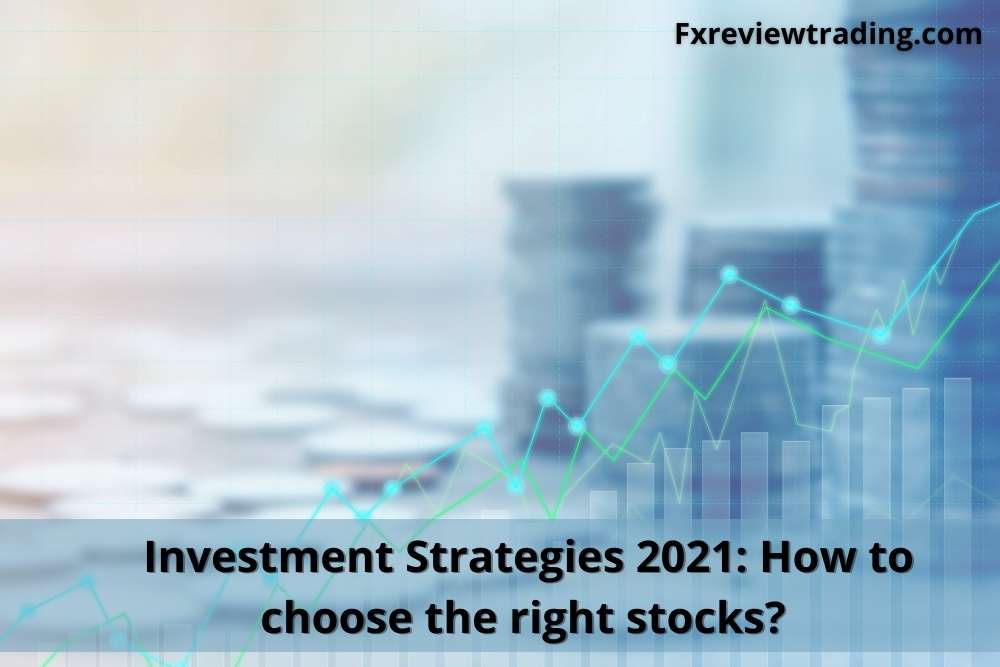Multiple factors impact profits or losses while investing in stocks. Therefore, you need to go with the right investment strategy to avoid losses as much as possible and maximize your returns through investments. You can use several investing methods to thrive in the stock market, but mindlessly hopping from one strategy to another can harm your assets. Instead, you need to stick to some strategies that suit your investment style.
In any market, whether it is foreign exchange, stocks, cryptocurrencies, or commodities, mainly there are two investment or trading styles: long-term and short-term investment. In this article, we will discuss both types of investment strategies in detail. It will also help you to choose the right stocks.
There is a common myth around investment strategies that the best strategy is one that has the most remarkable history in terms of returns. There are many more investing techniques than those listed in this article, and there are much too many to name. But it is important to understand that the best strategy is the one that matches your objectives and risk appetite.
What is an investment strategy?
An investment strategy is a complete package of some fixed principles that can help you achieve your investment goals. Strategic investing is based on your capital and risk tolerance. Of course, you can add multiple stocks to your investment portfolio when you are driven by your emotions, market sentiments, finance news, etc. Still, proper investment technique guides you on the path of creating higher returns through informed decisions.
There are different kinds of investment strategies based on long-term or short-term trading styles. The popular long-term investment strategy is the buy-and-hold strategy, where you buy a company’s stock and do not sell for at least 3-5 years. This is one of the most excellent tools to generate passive income.
On the other hand, day trading is one of the most common short-term trading strategies. Day trading, scalping, and swing trading all these strategies focus on holding the position for short time frames such as seconds, minutes, hours, days, weeks, and months. Every strategy is subjected to different timeframes.
The best investment strategy is the one that works best for you, so choose what works best for you and stick to it. So let’s dive deep into the investment strategies.
Best Investment Strategies
Why are you here? Of course, to know the best investment strategies that can help you to reach your financial goals and generate higher profits. But the fact is there is no objective answer for what is the best investment strategy. You have to determine what works best for you by trying out different strategies.
The strategies we are discussing guide you to choose your own path of your investment journey. You must have an investment strategy, regardless of the one you choose. They are a set of principles that you need to take care of while investing in the stock market.
Always consult a certified financial adviser or financial planner before designing your own investing strategy or making a significant investment decision. They all come with their own set of risks that should be carefully considered. They will collaborate with you to create a plan that meets your requirements.
When you make an informed decision based on your financial situation, any of these tactics may yield a competitive return.
Best Investing Strategies: Fundamental Analysis
It is a crucial first step in stock investing that most investors overlook. They just follow market sentiments, professional investor advice, and news, among other things. Fundamental analysis, on the other hand, is critical in stock market investing. It will be easier for you to invest wisely if you are aware of these details about a company.
Fundamental analysis is an investment approach that examines the company’s or asset’s economic and financial elements. This helps determine the asset’s intrinsic value or what its price should be in comparison to the present market price as well as its future growth potential.
Many investors skip this phase and invest their hard-earned capital in whatever firm they come across. This data is derived from publicly available data about the firm or asset and the market in which it operates, such as financial records that describe revenue growth, debt, and earnings, as well as more intangible components like management and strategy.
Before investing in any company, you should learn about its history, future plans or products, ability to remain stable under challenging circumstances, such as Covid, important stakeholders, and other factors that can affect the stock price. Furthermore, the difference in profit gained by investors who use basic analysis versus those who do not can be simply defined.
Best Investing Strategies: Value Investing
Value investing is a long-term investment strategy in which investors utilize fundamental analysis to find assets or stocks that are undervalued by the market and purchase them at a lower price.
This technique is based on the notion that markets overreact to news, resulting in short-term variations in demand and market price, even though the actual value of the asset remains the same.
A buy-and-hold strategy, or a long-term method in which investors don’t trade much, is at the heart of passive investing. Instead, they buy and hold a diversified portfolio of assets, which is typically based on a broad, market-weighted index such as the FTSE100 or Dow Jones.
This overreaction allows investors to buy on the cheap and profit when the market returns to normal and the inherent value is recognised.
Best Investing Strategies: Demo account
When it comes to investing in the stock market, don’t get carried away with your emotions. You may learn about the foreign market without risking real money by using a demo account. In addition, the sample account offers the customer the opportunity to practise trading through simulation. This will aid you in future investment decisions.
So, a demo account is essentially a complete package for new or inexperienced traders to begin their stock market investing journey. Initially, you can invest smaller amounts of funds and better understand the market by carefully monitoring your position.
If some of the firms in the index are replaced, the index fund automatically changes its holdings, selling old equities and buying new ones. As a result, investors benefit by sticking to the course and profiting from market increases over time.
A demo account is another important component that beginners should have in their trading adventure. Simulated trading not only aids in the understanding of global markets but can also aid in the familiarisation of the trading platform and basic analytical tools.
Best Investment Strategies: Dollar-Cost Averaging
Dollar-cost averaging is a long-term investment technique that tries to limit market volatility’s influence on the investment. Regardless of market conditions, index funds track their benchmark index.
Instead of buying an asset and identifying the proper entry and exit positions at the right time, investors in this method buy modest, predetermined quantities at regular intervals throughout time.
The ultimate purpose of passive investing is to develop wealth steadily rather than to make a quick buck. Because index funds own a diverse range of securities from their objective benchmarks, they spread risk widely.
Although a result, investors pay a higher ‘average’ purchasing price over the entire investment period, as the asset’s price will likely fluctuate with each investment. The essential idea of passive investment strategies is that investors can expect the stock market to rise over time.
Best Investment Strategies: Buy-and-hold strategy
Buy and Retain is a long-term, passive investment strategy in which investors buy an asset or stock and hold it for an extended length of time, regardless of market movements.
This strategy is based on the idea that investing over a more extended period of time would result in a higher total return on investment than investing for a shorter period of time. In addition, passive techniques provide investors with a quick and low-cost way to diversify by their very nature.
Investors who buy and hold actively choose investments but are unconcerned about short-term swings or technical indications. A portfolio will appreciate in lockstep with the market if it mirrors it.
Best Investment Strategies: Diversification
The golden rule of stock market investing is to diversify your portfolio rather than putting all of your eggs in one basket. To avoid potential losses and decrease severe risks, diversify your investment portfolio. When that industry declines, there is a greater possibility of losing money quickly.
Assume you’re a stock trader who invests in many stocks that are all related to the same industry. Always buy shares from multiple sectors and industries. This strategy will help you a lot in the long term. Diversification implies buying stocks from a variety of industries, such as energy, automobiles, education, banks and financial institutions, and more.
Best Investment Strategies: Income Investing
With global cash rates at historic lows, obtaining significant cash flow from investments is becoming more challenging.
The goal of income investing is to create a diversified investment portfolio that generates consistent income.
Dividends, fund distributions, bond yields, or interest payments from real estate holdings, shares, mutual funds, property funds or trusts, and bonds can all be used to supplement your income. Income investors frequently consider factors such as yield, past performance consistency, growth, and earnings to assess whether a potential investment is a good fit for their portfolio.
Best Investment Strategies: Short-Term Investing
Till now, we have discussed many long-term strategies for stock investing, but there is also a different taste to stock investing called short-term investing, or many people call it Intraday trading. But intraday trading or day trading is not the only short-term trading method. You should be aware of different short-term stock investing techniques like scalping, swing trading, and position trading.
Many people count position trading in the buy-and-hold investing method, but usually, position traders do not hold their position for more than two to three years. On the other hand, buy-and-hold investors hold their position for at least five years.
So let’s begin with scalping. Scalping is a short-term strategy where traders take advantage of small price movements by conducting a technical analysis. Day trading, Swing Trading, and position trading are also the same. But they differ from each other on the basis of timeframes.
Scalping has the shortest timeframe that is only seconds, minutes, or hours. Day trading typically has the timeframe of minutes to hours as you have to exit your position before the market closes. But in swing trading, traders hold their positions overnight and for several days and weeks. In position trading, you can go for several months without making any changes to your position.
Bottom Line
While investing in the stock market, you should take a sensible approach that includes risk management. There are several investment suggestions, but the ones listed above are the most crucial to consider before investing in any company. Furthermore, you must be aware of the stock market’s associated hazards, which can jeopardize your investing portfolio.
A well-regulated broker, such as PrimeFin, can help you get your feet wet in the stock market. The broker is known for offering its clients favorable terms and a user-friendly environment. Always remember that choose the strategy that works best for you and stick to it. Do not hop from one to another under the influence of someone.








